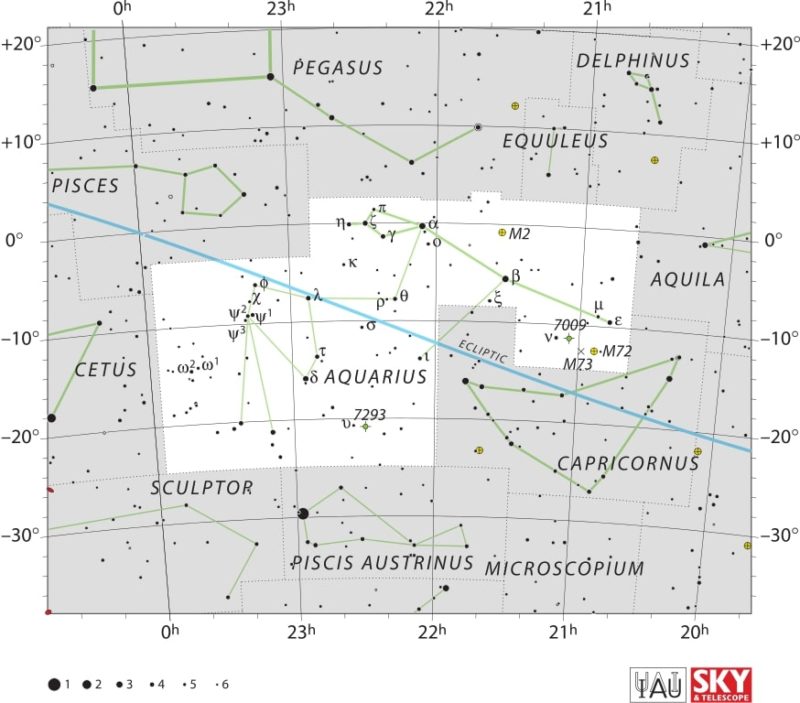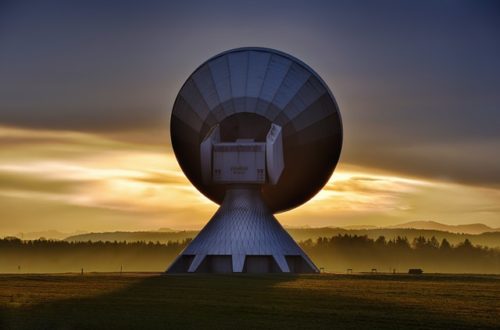Southern Delta Aquariid Meteor Shower Viewing Tips

The Southern Delta Aquariid meteor shower is a spectacular annual event. Unlike the more common Perseids and Geminids, this meteor shower is best observed from the southern hemisphere as it peaks late in July.
The Southern Delta Aquariids are known for their faint meteors. They come from the dust of the comet 96P/Machholz, with meteors traveling at roughly 41 km/s
Their regular presence makes for a tranquil skywatching experience. In the sections below, we’ll discuss the meteor shower’s history, how best to view it, and what makes this meteor shower so special.
What Are Southern Delta Aquariids?
The Southern Delta Aquariids are an annual meteor shower occurring from July 12 and August 23, offering a celestial display that captivates stargazers.
They take their name from the Delta star in Aquarius, which acts as their radiant point. Although visible to all countries, they are primarily seen from the Southern Hemisphere, because of the radiant’s location.
Peak activity occurs on July 30, when the shower produces up to 25 meteors per hour under dark skies.
Parent Comet of the Southern Delta Aquariids
The Southern Delta Aquariids are caused when Earth passes through the debris trail of comet 96P/Machholz, a short-period comet with a 5.27-year orbit. When Earth passes through this debris field, particles from the comet ignite in the atmosphere, creating visible meteors. This results in breathtaking streaks of light that paint the night sky.
Radiant Point Location
The radiant is close to the southern star of Delta Aquarii in the constellation of Aquarius, making them visible in southern hemisphere skies. As meteors radiate outward, observing from dark locations definitely enhances visibility.
When to See the Southern Delta Aquariids Peak
In the world of annual meteor showers, the Southern Delta Aquariids are both one of the most consistent and least appreciated. To get the most out of this celestial spectacle, knowing the peak timing, activity rates, and viewing conditions is key.
Peak Dates and Times
The Southern Delta Aquariids typically peak on July 30 each year. Though the shower runs from July 12 through August 23, viewing conditions improve day by day as the shower approaches its peak.
The ideal observing window would still be after midnight and more so in the early pre-dawn hours. That’s when it’s rising highest in the sky, where the meteors will appear, in the constellation Aquarius. If you live in the Southern Hemisphere or near the equator, you may observe more colorful displays. This is largely thanks to the radiant’s position.
Factors Affecting Visibility
Dark skies are extremely important when viewing meteors, as bright skies due to light pollution can greatly hinder visibility. No urban areas, and you’ll want to look at weather forecasts to find the clearest possible skies.
Cloud cover or during bright moon phases can obscure the view, making it essential to choose a moonless, unobstructed location.
Viewing Tips for Southern Delta Aquariid Meteor Shower
Skywatching, catching the Southern Delta Aquariids in particular, is an immensely gratifying endeavor. This is increasingly true for anyone south of the equator or in the southern half of the Northern Hemisphere. Peaking in late July, this summertime meteor shower is best experienced in dark, moonless skies away from urban areas.
A little bit of patience and preparation will go a long way toward ensuring you make the most of this incredible celestial event.
Find Dark Sky Locations
To experience the meteors in all of their glory, find a dark spot far from city lights. Rural areas or state parks are best, and apps, such as Light Pollution Map, can assist in finding dark sky sites.
Thinner air at higher altitudes means less atmospheric haze and better visibility overall. Reaching out to local astronomy clubs can help you get firsthand guidance and make the most of your viewing experience.
Check the Moon Phase
Moonlight washes out the visible majority of the meteors, especially the faint ones, so try to schedule your trip close to the new moon. Late July 2025 nights after midnight will mostly be free of the moon and perfect for viewing.
Preventing your eyes from getting distracted by the moon will help your dark adaptation and make it easier to see the dimmer meteors.
Allow Time for Dark Adaptation
Allow some time in dark adaptation before observing. This dark adaptation takes about 30 minutes, which is how long it takes your eyes to get used to seeing dim meteors. Don’t use bright screens or flashlights, as they will ruin your dark adapted vision.
Use a Star Chart or App
A star chart or astronomy app will help you find Aquarius, the radiant point. Meteor shower tracking apps are a great way to not miss the meteor shower peaks.
Be Patient and Comfortable
We recommend bringing portable reclining chairs or blankets to get comfortable for longer viewing sessions. Snacks and drinks will make your time waiting pleasant, and being comfortable will help you enjoy the show even more.
Recommended Equipment for Viewing
To have the best experience with the Southern Delta Aquariids, you’ll want to be equipped with the proper viewing gear. These few select tools can enhance your experience in the night sky, from those taking in their first sights to the seasoned night sky enthusiast. Below, we explain some of the most important things to look out for.
Binoculars or Telescope?
For meteor viewing, binoculars are preferable to telescopes. Their larger field of view allows them to catch meteors soaring across the sky in real-time. This is particularly key since the Southern Delta Aquariids are zippers.
Telescopes, great for zoomed views of celestial bodies such as planets, don’t work at all for viewing fast-moving meteors.
Photography Equipment for Capturing Meteors
To best photograph the meteors and the surrounding beauty, use a DSLR or mirrorless camera. You’ll get the best results by pairing it up with a wide-angle lens!
Put your camera in manual mode, using a low ISO (400-800). Use long exposure times of 15 to 30 seconds to pick up the glowing ionized trails from some 5% to 10% of Southern Delta Aquariid meteors.
A sturdy tripod is critical for stability, and practicing your setup before the event can save valuable time under the stars.
Essential Accessories
The kind of enjoyable stargazing experience you’re hoping for takes a little planning and consideration. Be sure to plan for warmth even during the summer months, as it can be severely cold at night.
If you plan to stay for several hours, bring blankets, camp chairs, and munchies. A red-filter flashlight preserves your night vision, which can take 20 to 30 minutes to adjust completely.
Conclusion
Seeing the Southern Delta Aquariids is a unique opportunity to commune with the night sky. There’s a special magic to the soft glow of meteors streaking through the darkness, which can only be appreciated in silence and solitude. A little advanced planning, finding a dark enough location, and bringing the right equipment will help you enjoy the show even more.
We hope you’re as excited as we are to get outside and look up! Watching the Southern Delta Aquariid meteor shower is an incredible, yet easy, opportunity to experience the beauty of nature. So don’t sleep on the opportunity to see this celestial spectacle. Mark your calendars, find a cozy blanket, and bask in the experience.
Frequently Asked Questions
What are the Southern Delta Aquariids?
This is an annual meteor shower that goes on from July 12 through August 23. They come from debris of Comet 96P/Machholz and seem to radiate from the Aquarius constellation.
When is the best time to see the Southern Delta Aquariids?
The Southern Delta Aquariid meteor shower peaks on July 30. There will be a very short window of viewing opportunity during this time period between after midnight and before dawn when the sky is darkest.
How many meteors can I expect to see during the peak of the Southern Delta Aquariid meteor shower?
At the peak of the Southern Delta Aquariid meteor shower, visible meteors can reach rates of up to 25 meteors per hour under perfect, dark-sky conditions. Light pollution is a factor in making visibility less dramatic.
Where should I go for the best viewing experience for the Southern Delta Aquariids?
Find a dark spot, well away from city lights. Wide open skies away from light pollution, like rural, suburban, national and state parks, and desert areas, provide the best viewing conditions for the Southern Delta Aquariids.
See also:
- Previous meteor shower: Piscis Austrinid Meteor Shower
- Next meteor shower: Alpha Capricornid Meteor Shower
Would you like to receive similar articles by email?





